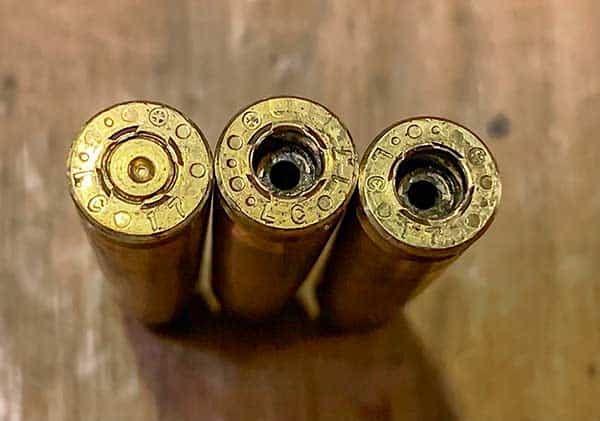Rifle Primers Fundamentals Explained
Table of ContentsSome Known Details About Reloading Primers Primers In Stock - An OverviewThe 45-Second Trick For Cci PrimersThe Basic Principles Of Small Pistol Primers Indicators on Winchester Primers You Need To Know
Some muzzleloaders have guides like cap weapon caps. https://www.polygon.com/users/relodprim3rs.
Instances include pistol cartridges, rifle cartridges, and shotgun coverings. Larger artillery items on the other hand generally make use of electrical priming. In weapons the guides are frequently a different component, put inside the barrel to the back of the main propellant chargebut there are various other examples of weapons, including for instance some automated weapons, developed to shoot cartridges with important electric primers.
Winchester Primers - Questions

This hole was loaded with finely ground powder, which was then fired up with a warm coal or torch. With the advent of hand-held weapons, this became an unwanted way of firing a gun. Holding a burning stick while attempting to pour a cost of black powder thoroughly down a barrel is dangerous, and attempting to hold the gun with one hand while all at once aiming at the target and seeking the touchhole makes it very challenging to fire properly. [] The very first effort to make the process of shooting a little arm simpler was the "matchlock".
The match was a slow-burning fuse made from plant fibers that were saturated in an option of nitrates, charcoal, and sulfur, and also dried (https://docs.google.com/presentation/d/1Yb7TOL8wijuHklDfSHjAce309Hcxx-LESNbkSxIUUYo/edit?usp=sharing). This "slow-match" was sparked before the weapon was needed, and it would slowly melt, keeping a hot ember at the burning end. After the weapon was loaded as well as the touchhole topped with powder, the burning idea of the match was positioned so that the lock would certainly bring it right into contact with the touchhole.
Little Known Facts About Winchester Primers.
This brought the suit down to the touchhole, firing up the powder - https://anchor.fm/relodprim3rs. With careful focus, the slow-burning match could be maintained burning for lengthy periods of time, and also the use of the lock system made relatively exact fire feasible. The following transformation in ignition modern technology was the "wheel-lock".

The protected flashpan also offered some capacity to hold up against negative weather. The wheel-lock enjoyed just a short period of appeal prior to being superseded by a simpler, a lot more durable design.
Facts About Small Pistol Primers Uncovered
As the name suggests, the flintlock used flint as opposed to iron pyrite. The flint was held in a spring-loaded arm, called the "dick" from the similarity of its motion to a pecking poultry. The dick rotated via roughly a 90-degree arc as well as was held in the tensioned, or "cocked" placement by a trigger. https://www.openstreetmap.org/user/relodprim3rs.
The "half-cock" placement held the penis halfway back, as well as used a deep notch so that drawing the trigger would not release the cock. Half-cock was a safety and security position, utilized when loading, storing or lugging a crammed flintlock. The "full-cock" placement held the cock all the means back and also was the position where the gun was discharged.
It served as both a flashpan cover and also a steel striking surface for the flint. The frizzen was hinged and also spring-loaded to make sure that it would secure the open or shut position. When shut, the striking surface was placed so that the flint would strike at the proper angle to generate a trigger.
How Reloading Primers can Save You Time, Stress, and Money.
The flintlock mechanism was simpler and more powerful than the wheel-lock, as well as the flint as well as steel offered a great, reliable resource of ignition. The flintlock stayed in armed forces service for over 200 years, and also flintlocks are still made today for historic re-enactments and muzzle-loading target competition, and also for hunters that take pleasure in the added obstacle that the flintlock provides.
By the middle of the 19th century, the percussion or caplock system was well established., as it was easier as well as extra dependable than the flintlock.
The flashpan and frizzen were gotten rid of and that site changed by a tiny, hollow straight cylinder (drum) screwed into the bored-out and also tapped flash opening and also carrying a "nipple" over which the cap might be fitted. A "hammer" which additionally had half-cock (for loading and using the cap) and also full-cock settings changed the penis.